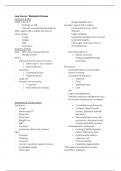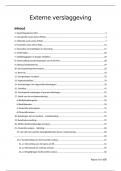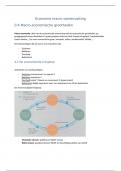Summary
Summary RESPIRATORY MLA MAPPING - for Medical Exams and Finals
- Module
- Medicine (MLA)
- Institution
- The University Of Manchester (UOM)
One page summaries for topics listed in the MLA Topic Map associated with respiratory medicine Contents include: Lung Cancer; Pleural Effusion; Acute Bronchitis; COPD; Asthma; etc. All MLA topics are covered within my shop - see other documents for more Each topic covers approx. one page for a s...
[Show more]





